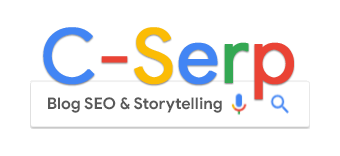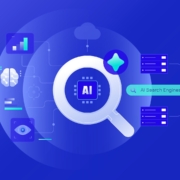Relevance is the new ranking signal: How AI search redefines optimization

For years, SEO professionals have obsessed over rankings.
What position are we in? Did we move up or down? Can we get back to Position 1?
But as AI-driven search continues to reshape how information is retrieved and delivered, we need to ask a different question: Are we relevant enough to be included at all?
I still remember the first time I dropped from Position 1 to 7 for a major keyword – I literally sat on the floor and sobbed.
Back then, rankings weren’t just about traffic – they were validation.
If Google said you were the best, it was so. Everyone believed it.
Holding that top spot meant everything. Losing it – even by a few places – felt like losing everything.
In a world of large language models (LLMs), AI Overviews, and generative search features, traditional ideas about optimization have been turned on their head.
The game is shifting from chasing position to securing presence in the AI layer of search.
And that presence is earned through clarity, directness, and relevance – not technical compliance, keyword density, or even link equity.
The shift from rank to retrieval
Classic SEO relied on rankings as the primary signal of success.
If you ranked first, you were winning.
But AI-generated search experiences like Google’s AI Overviews, ChatGPT Browse, and Perplexity don’t work that way.
These systems don’t rank full web pages in a linear list.
They retrieve and synthesize information based on relevance to the query and clarity of expression.
Here’s what that means:
- If your content answers the question clearly, you may be surfaced.
- If your content buries the answer in fluff or lacks semantic cues, you might be skipped.
- If you don’t use the language of the searcher, you won’t align with the prompt, and you will be skipped.
Today, being a strong brand is table stakes – you need authority and recognition to even have a chance at being surfaced by AI-driven search.
But even if you have that authority, it won’t save you if your content can’t be easily understood or retrieved.
Success now requires doing both things well:
- You need to build brand strength.
- Structure your content clearly.
Neither on their own can fully compensate for deficiencies in the other.
Dig deeper: 6 easy ways to adapt your SEO strategy for stronger AI visibility
Semantic understanding doesn’t eliminate literal matching
There’s a common myth that LLMs don’t need keywords because they “understand language.”
That’s only half true.
While LLMs are excellent at interpreting meaning and generating fluent responses, their retrieval layers still rely heavily on surface-level matching.
They look for literal matches in the prompt and in your content.
If your page doesn’t mention the terms users are searching for, even if it covers the same concept, it may not get selected.
Testing and observations have shown that:
- Content with clear, repeated terminology performs better in AI summaries.
- Pages that use synonyms or overly clever phrasing often miss the cut.
- Headings and lists matter more than ever – they serve as extraction cues.
In short, relevance starts with “being findable” at the language level, not just the conceptual one.
Relevance signals in an AI world
If we accept that AI-powered systems prioritize relevance over rank, then we need to rethink how we define and signal relevance in our content.
Here are the new relevance cues that matter.
Direct answers
- AI tools love content that answers questions explicitly. Don’t make them guess or figure it out – spell it out clearly.
Structured formats
- Lists, FAQs, and bullet points are easier for AI to extract and summarize.
Semantic cues
- Words like “step-by-step,” “definition,” “most important,” and “in summary” are helpful for extraction.
Topical clarity
- Each section should have a single purpose. Don’t meander and don’t bury the lede.
Prompt alignment
- Use the same language your audience would use in a query. Echo their terminology.
These are not ranking factors in the classic sense. They’re retrieval facilitators.
They help the AI decide whether your content is worth pulling into the answer.
Why relevance beats rankings in AI search
In traditional SEO, it was possible to “outrank” better content through technical optimization, backlink authority, or strategic keyword targeting.
You could sometimes claim a top spot even if your content wasn’t the best answer – as long as you checked enough of the old-school SEO boxes.
In AI-driven search, those days are over.
If your content isn’t the clearest, most relevant, and most understandable option, it won’t get included in AI Overviews, ChatGPT Browse results, or Perplexity summaries – no matter how many backlinks you have or how high your domain authority is.
AI models aren’t just picking “the best optimized” page – they’re synthesizing answers from content that matches the user prompt and can be extracted cleanly.
In other words, being second-best often means being invisible.
This is a huge shift. It means SEOs must focus not only on building strong technical foundations and brands, but also on creating content that is the obvious best choice for retrieval.
The future of optimization isn’t about being “optimized” in the traditional sense – it’s about being chosen at the moment the AI model decides what to show.
Dig deeper: AI optimization: How to optimize your content for AI search and agents
Optimization, reframed
So, what does it mean to be optimized in 2025?
It means:
- Being understandable by both users and machines.
- Aligning your language and structure with how people ask questions.
- Writing content that fits into someone else’s summary, not just your own webpage.
Optimization now includes:
- Making content easy to parse (short paragraphs, clear headings).
- Front-loading answers instead of burying them.
- Using the right terminology, not just the most creative one.
- Demonstrating E-E-A-T (experience, expertise, authoritativeness, and trustworthiness) in a way that’s easy to spot and cite.
The question is no longer “Can I rank for this keyword?” but rather “Am I the clearest, most relevant source to answer this question right now?”
Dig deeper: Search, answer, and assistive engine optimization: A 3-part approach
What SEOs should do next
Rethink your content structure
Review your top content pieces and ask yourself if the main ideas are clear within the first few seconds of reading.
- Are your headings descriptive?
- Does each section focus on a single, easily digestible point?
If not, restructure it to improve both human and machine comprehension.
Match language to prompts
Conduct keyword research not just for ranking opportunities, but also to understand how users phrase their questions.
Then, mirror that phrasing in your content.
Remember, LLMs retrieve based on how closely your language matches the query, not just how conceptually related it is.
Double down on clarity
Prioritize simple, declarative sentences over clever phrasing or puns.
Ask yourself: would a reader (or a machine) know exactly what this section is about without needing to infer?
Break up complex ideas into smaller pieces, and avoid burying your main points deep in the text.
Refresh and refactor legacy content
Don’t just update the dates on old posts.
- Refactor the structure.
- Improve the formatting.
- Tighten up the language.
- Explicitly include the newer terminology searchers are using (and remember, language shifts over time.
Have your keywords morphed?
When the pandemic began, everyone called the virus “coronavirus,” but at some point the language shifted, and it was only referred to as COVID-19, and now it’s commonly just called COVID.
Keep up with the shifts in language and make your evergreen content retrieval-ready.
Monitor AI visibility
Start paying attention to whether your content is appearing in AI Overviews, ChatGPT Browse answers, or tools like Perplexity.
Tools for monitoring AI visibility are starting to emerge, and early adopters will have an advantage. Treat AI citation visibility as a new KPI.
Dig deeper: How to track visibility across AI platforms
Design for extraction
Think about whether an AI could easily lift a paragraph, list, or answer from your page and present it cleanly.
If it can’t – because your information is buried, fragmented, or cluttered – you’re handicapping your retrieval potential before the game even starts.
We’re entering an era where being included in the AI layer is as valuable – if not more – than being number one in the traditional SERP.
That inclusion depends on your ability to signal relevance at the moment of retrieval.
So, forget the leaderboard. Focus on being the best answer.
That’s what “optimized” means now.
Dig deeper: How to optimize your 2025 content strategy for AI-powered SERPs and LLMs


